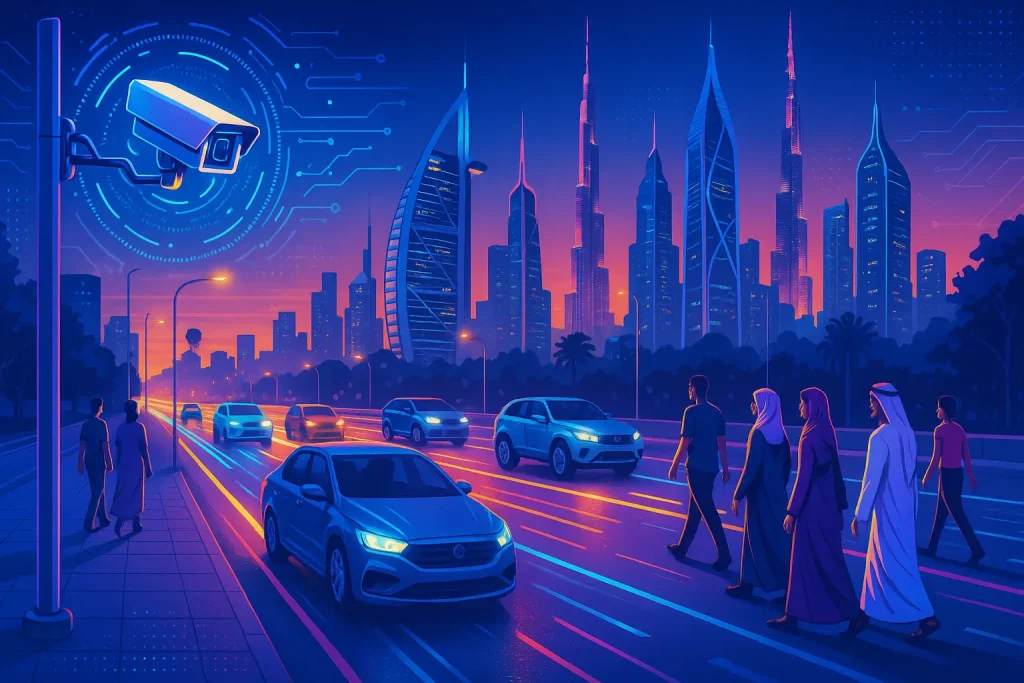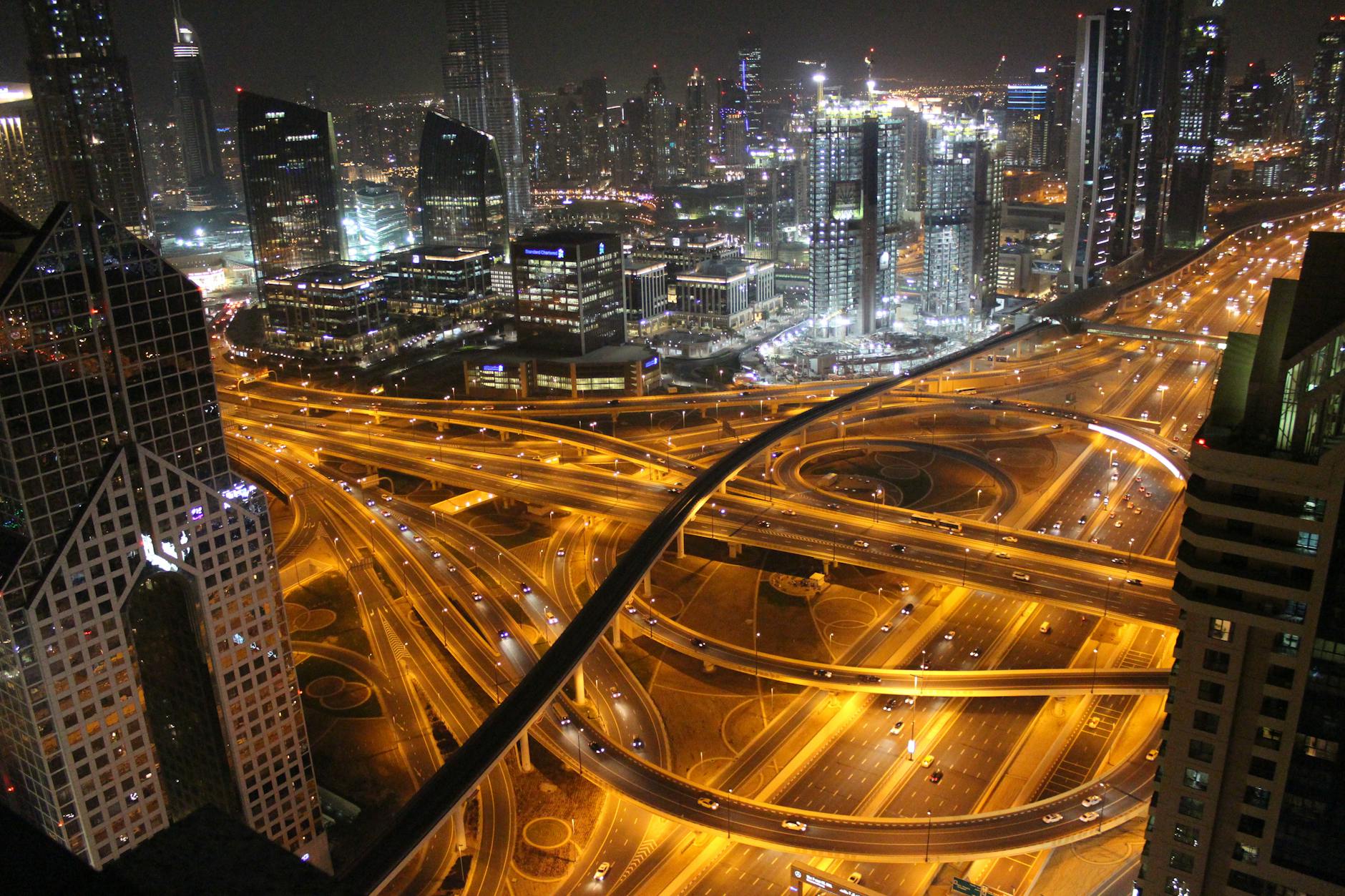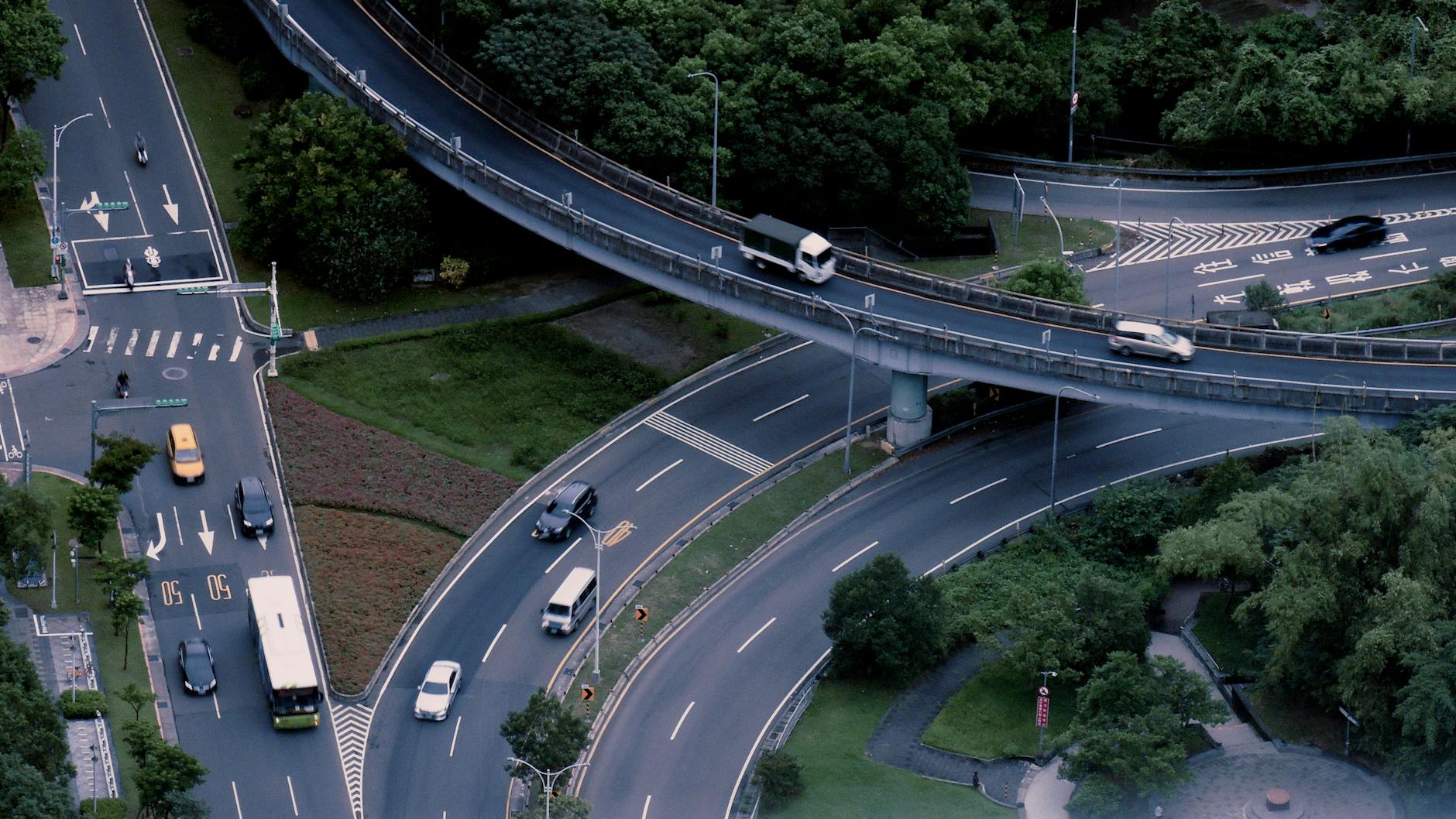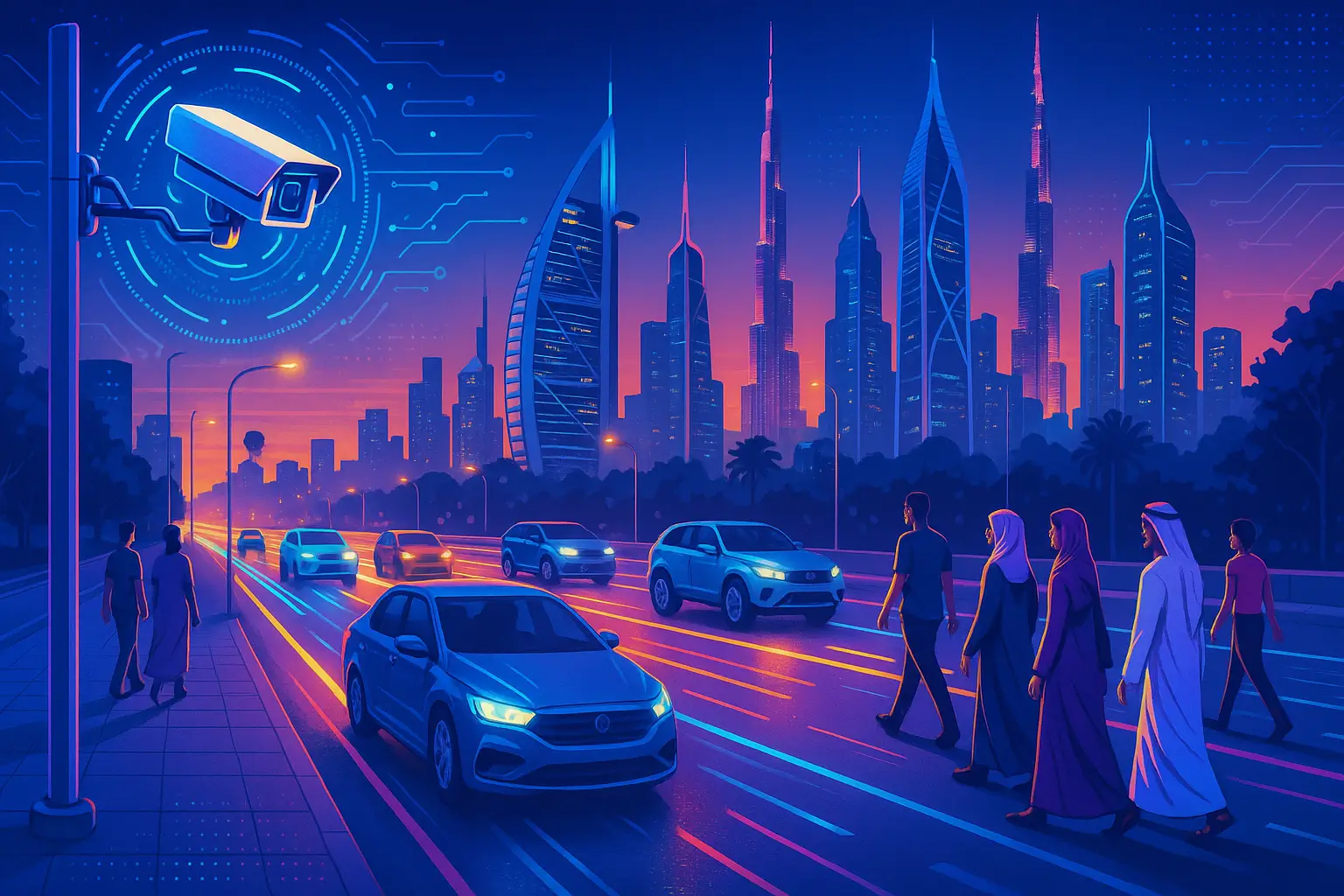How AI Road Safety in UAE Is Transforming Streets: Artificial Intelligence in UAE Transportation and Smart City Road Safety Solutions for 2025

AI road safety UAE is reshaping how cities manage and improve travel security. It’s no longer just about cameras and signals—cutting-edge projects are using artificial intelligence to track real-time hazards, prevent accidents, and support a smart city vision built on safer, more connected streets. With Dubai, Abu Dhabi, and Ajman leading the charge, new technologies like smart radars, AI-powered cameras, and automated traffic monitoring are making a measurable difference, reducing crashes and streamlining enforcement.
As part of the government’s push for AI traffic management UAE and AI road safety UAE, there’s a clear shift towards using advanced road safety technology UAE to protect all road users. These innovations are matched by strong investment and long-term planning, setting a benchmark for other countries in the region. You’ll see how artificial intelligence in UAE transportation is shaping safer journeys for everyone, and why the country’s vision for UAE smart city road safety is gaining global attention.
Learn more about how policymakers are using smart solutions to reduce risks and improve safety by exploring the UAE Thrive Daily News March 6, 2025. AI accident prevention UAE is shaping the future of urban mobility—this is just the start.
Transformative AI Road Safety Initiatives in the UAE
The UAE is setting a benchmark for road safety by using artificial intelligence in transportation. Across Dubai, Abu Dhabi, and Ajman, authorities are deploying bold AI-powered solutions to improve safety and streamline traffic management. These initiatives highlight the country’s commitment to making every journey safer, responding quickly to violations and encouraging responsible driving. As these systems roll out, they’re not just protecting drivers—they’re redefining road safety across the region.
Dubai’s AI-powered Radar System
 Photo by Lina Mamone
Photo by Lina Mamone
In Dubai, the new AI-powered radar system is paving the way for safer roads. This advanced technology silently monitors traffic on highways and busy city streets, detecting not only speeding but also distracted driving—such as using a mobile phone or failing to stay in a lane. The radars feed real-time data straight to police patrols, enabling swift interventions when dangerous behaviour is detected.
Key features of Dubai’s AI radar system include:
- Real-time analysis: Instantly recognises a wide range of violations and sends alerts to authorities.
- Comprehensive coverage: Monitors all main roads and highways, reducing areas where unsafe driving can go unnoticed.
- Automatic enforcement: Keeps the focus on prevention and rapid correction rather than delayed responses.
This proactive approach means drivers quickly adjust their habits, knowing enforcement is constant and precise. Dubai’s system doesn’t just penalise—it encourages everyone to drive safely, supporting the broader goal of AI road safety UAE and making the city a role model for the region. For more about the system’s scope and effect, see Dubai unveils innovative AI radar system.
Abu Dhabi’s EXIT-I Smart Traffic Cameras
Abu Dhabi’s EXIT-I smart traffic cameras are strategically placed at major exits and busy intersections, focusing on common causes of accidents like aggressive manoeuvres and failing to yield for pedestrians. These solar-powered devices keep a close watch, automatically recording violations and making sure that any breach is quickly flagged for police action.
The impact of EXIT-I includes:
- Instant violation recording: Reduces the risk of missed infractions, especially at pedestrian crossings and branching lanes.
- Promotes safe habits: By catching rule-breaking in real time, drivers are encouraged to adopt more responsible behaviour behind the wheel.
- Stronger public safety: Maintains order at traffic bottlenecks where minor mistakes can lead to major accidents.
EXIT-I technology adds another layer of defence for Abu Dhabi’s roads, supporting the city’s wider investment in AI traffic management UAE and smart city road safety. These upgrades further the focus on AI road safety UAE and help protect both residents and visitors. To understand the scale of this implementation, check out the details on new traffic radars activated at exits and crossings in Abu Dhabi.
Ajman’s Upcoming Smart Traffic Gates
Ajman is accelerating its smart city ambitions with a brand-new network of AI-powered traffic gates launching in October 2024. These smart gates are designed to catch two frequent but often-overlooked offences: drivers on their mobile phones and those not wearing seatbelts. With 26 locations chosen for installation, Ajman’s smart gates will bring unmatched accuracy in violation detection.
Why this matters:
- Modernising enforcement: The smart gates detect violations instantly, filling the gap left by traditional patrols and manual checks.
- Direct impact on safety: By flagging mobile use and no-seatbelt cases, the system targets high-risk behaviours known to increase accident severity.
- Supporting a safety-first culture: The city sends a clear message—distraction and carelessness have no place on modern roads.
Local drivers and visitors will notice a decisive shift from warning to real action, as these high-tech gates support the broader vision of AI accident prevention UAE. For practical details and what to expect this October, visit UAE: Smart Ajman traffic system to detect phone use and seatbelt violations. Ajman’s investment in smart traffic gates reflects the continuing growth of AI road safety UAE as a national strategy.
To learn more about successful technology-driven road safety strategies and see how the country integrates smart solutions into daily transport, explore insights and updates at UAE Thrive: Smart City Planning and Infrastructure.
By putting AI at the centre of road safety, the UAE is not just responding to today’s challenges—it’s shaping the future of safer, smarter streets for all.
AI Traffic Management and Connected Infrastructure: Creating Safer Urban Environments
 Photo by LUNA LUNA
Photo by LUNA LUNA
Smart cities across the UAE are transforming urban roads with artificial intelligence. AI road safety UAE technology isn’t just reacting to problems; it’s working in the background—predicting risks, guiding drivers, and making every journey safer. If you’ve ever wondered how AI makes streets safer, the answers are found in high-speed data processing, instantly adaptive systems, and connected vehicles all weaving together for a safer everyday experience.
Real-time Traffic Flow and Accident Prediction
A modern city doesn’t stop moving, and neither does the data flowing through it. AI road safety UAE is built on systems that analyse huge amounts of live information from sensors, cameras, and connected vehicles. These smart networks spot unusual congestion, risky driving behaviours, and accidents as they happen, not after the fact.
- Instant alerts: When a hazard appears—whether it’s sudden braking or a vehicle stopped on the shoulder—AI immediately notifies traffic authorities. This allows police and emergency services to react before a problem becomes a bigger risk.
- Accident forecasting: By seeing patterns in how and where incidents happen, AI can highlight areas most at risk for the next collision, so cities can take targeted preventive measures.
- Crowd and congestion management: When a concert ends or a major event lets out, AI-powered systems help direct traffic flows and prevent dangerous jams.
Thanks to these AI systems, the UAE is able to act fast and smart. Discover more about live data systems in UAE cities at AI in transportation | The Official Portal of the UAE.
Smart Signal Systems and Adaptive Routing
Stuck at a red light when there’s no one coming? AI-powered signal systems are making that frustration a thing of the past. UAE’s new traffic light technology can sense real-time traffic volumes at each junction, changing signal patterns on the fly to keep vehicles moving and prevent bottlenecks.
- Smart signals in action: These intelligent intersections shorten your commute by reducing wait times and adapting to unusual conditions like accidents or sudden traffic surges.
- Making room for emergency vehicles: When an ambulance or fire engine is detected, smart signals can turn red lights green to clear a path, potentially saving lives.
- Adaptive rerouting: Navigation apps and traffic displays feed live data from the signal network, offering drivers the best routes instantly.
If you’re interested in how these systems are being rolled out, Dubai’s RTA is leading with AI-powered smart traffic signal systems to create smoother journeys in the city.
Integrated Fleet and Public Transport Management
AI doesn’t stop at private vehicles—it’s at the core of safer commercial fleets and public travel in the UAE. With so many delivery vans, buses, and ride-hailing cars sharing city streets, integrated fleet management is crucial for everyone’s safety.
- Fleet tracking and alerts: AI-powered platforms allow companies to monitor their vehicles in real time—spotting risky behaviour like speeding, harsh braking, or distracted driving so it can be corrected on the spot.
- Safer logistics: Predictive maintenance lets fleet managers fix small mechanical issues before they become roadside breakdowns or hazards.
- Seamless integration with public transport: AI connects buses, metros, taxis, and even shared bike schemes, helping all road users move safely and efficiently.
Strong fleet management solutions are fundamental for the UAE’s logistics and public transport sectors. If you manage or use these services, you can see how leading fleet management solutions in UAE offer smart safety features to keep everyone secure on city roads.
By weaving artificial intelligence into every layer of urban travel, the UAE is redesigning its streets for greater safety and smoother journeys. For those who want to dig deeper into how AI traffic management UAE fits into long-term infrastructure strategy, explore the wider smart city initiatives featured at Smart City Planning and Infrastructure.
Impact of AI on Public Awareness and Behaviour Modification
AI road safety UAE plays a major role in shaping habits and building public trust through smarter enforcement. Artificial intelligence is changing more than just how drivers interact with roads—it’s shaping public attitudes and daily behaviour behind the wheel. By making enforcement visible, communicating clearly, and using data-driven campaigns, the UAE is seeing a shift towards a culture of road safety. These changes aren’t just technical; they encourage responsible habits and equip everyone with knowledge to make safer choices.
AI Enforcement and Transparent Fines
 Photo by Łukasz Promiler
Photo by Łukasz Promiler
When drivers know enforcement is ever-present, behaviour changes fast. In the UAE, AI-powered systems make sure no violation goes unnoticed. Digital cameras, radars, and smart gates are highly visible reminders that the rules are always being monitored.
Key impacts of visible AI enforcement include:
- Reduced risky driving: People are less likely to speed, use their phones, or skip seatbelts when they see automated checks.
- Immediate digital fines: Offenders get digital tickets almost instantly. There’s no delay or confusion, which helps drive home the lesson.
- Transparent communication: Clear, regular reminders about traffic fines and what triggers them build public trust. Knowing exactly why and when a fine is issued leads to fewer disputes and more conscious driving.
UAE’s approach prioritises openness. Fines aren’t just handed out—they’re explained, with the reasons and evidence made clear to all drivers. Combined with digital notifications, this creates a strong deterrent effect and encourages everyone to follow the rules.
This focus on transparency is echoed in other public safety enforcement—see how increased penalties and clear communication create real results in the UAE Thrive Daily News April 17, 2025.
For a detailed overview of how technology fosters safer roads, you can explore How AI Can Improve Road Safety and Reduce Accidents.
Data-driven Education and Awareness Campaigns
AI doesn’t just catch bad behaviour—it helps prevent it by guiding education efforts. The wealth of data collected by AI road safety UAE systems is now shaping how road safety campaigns are designed. Instead of generic warnings, campaigns target the most urgent risks and reach the people who need help the most.
Here’s how AI and data transform road safety education:
- Identifying top risks: AI pinpoints where and when risky driving spikes, so authorities can target support in real time.
- Customised messaging: Outreach programmes focus on common violations like phone use or not buckling up, with messages tailored to different regions and demographics.
- Measuring results: Data lets officials see immediately if behaviour changes after a campaign—helping them refine approaches for even greater impact.
This process isn’t just about short-term fixes. With ongoing monitoring, authorities can build long-term plans for safer streets. As road users become more aware, responsible habits become second nature.
Real-world examples show how these strategies pay off. In Abu Dhabi and Sharjah, well-timed public health campaigns, informed by AI-generated data, have helped reduce incidents at key black spots. For more insight, read about the latest public health campaign igniting road safety awareness.
With artificial intelligence in UAE transportation, the drive for safer roads is no longer about hoping for the best—it’s about using the best tools to empower everyone on the road. The end result is a smarter, safer, more responsible way to travel, and a model for road safety across the globe.
Conclusion
The UAE’s commitment to AI road safety UAE sets a strong example for cities worldwide. Smart initiatives like Dubai’s advanced radars, Abu Dhabi’s EXIT-I cameras, and Ajman’s intelligent traffic gates show that artificial intelligence in UAE transportation is saving lives today and building safer habits for years to come.
AI-driven road safety technology UAE is not only making streets safer for drivers, cyclists, and pedestrians, but also helping to create a transparent and trust-based approach to law enforcement. Continued investment in smart city infrastructure ensures that UAE cities remain at the forefront of AI traffic management UAE.
As the region refines and expands these efforts, every commuter, policymaker, and family plays a part. With smart solutions now shaping everyday journeys, the UAE’s roads are more secure and connected. Let’s keep learning, stay aware, and support this journey towards safer, smarter streets.
To explore the broader impact of smart technologies and digital infrastructure in the UAE, read our in-depth guide: UAE Smart Cities: How IoT UAE and Digital Infrastructure Are Powering Sustainable Urban Growth in 2025.
To dive deeper into other smart city transformations and what they mean for our future, visit the Smart City Planning and Infrastructure section. Thanks for reading—what positive changes have you noticed on UAE roads? Share your thoughts and help grow this culture of road safety.
Frequently Asked Questions
How does AI technology improve road safety in the UAE?
AI technology detects traffic violations in real time, predicts high-risk situations, and helps authorities respond faster. Its deployment in the UAE addresses speeding, distracted driving, and accident-prone areas with more accuracy than manual patrols.
What is the role of smart traffic cameras in Dubai’s AI road safety strategy?
Smart cameras in Dubai record behaviour like mobile phone use, seatbelt non-compliance, and aggressive driving. They send instant data to law enforcement, which helps reduce delays and encourages safer driving.Which AI initiatives have improved traffic management in Abu Dhabi?Abu Dhabi’s EXIT-I camera system and adaptive signals help spot risky driving, manage congestion, and improve response to incidents. These AI tools deliver measurable drops in certain types of accidents.
What benefits do AI-powered road safety systems offer compared to traditional methods?
AI systems offer 24/7 monitoring, instant alerts for violations, unbiased enforcement, and data for targeted education campaigns. They improve transparency and encourage safer habits among all road users.
How does AI in transportation affect daily drivers in the UAE?
AI helps make commutes smoother with adaptive signals, real-time rerouting, and early warnings about accidents or hazards. Drivers notice fewer traffic jams and faster emergency response times.

